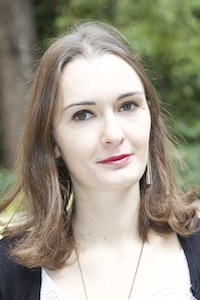In this week’s CEN seminar, Jessica Massonnié talked about her research looking at the effect of classroom noise on learning. Here she summarises her talk.
 Classrooms are lively environments and, as you may remember from your own experience, they are also noisy. Teachers and students report classroom chatter, and noise coming from movement (i.e. scraping sounds from tables and chairs) as the most annoying sources of noise.
Classrooms are lively environments and, as you may remember from your own experience, they are also noisy. Teachers and students report classroom chatter, and noise coming from movement (i.e. scraping sounds from tables and chairs) as the most annoying sources of noise.
Previous research has shown that hearing a single person talking does, in most cases, impair performance (whether we measure attention, memory, reading skills or maths performance). However, more complex types of noise (i.e. when different conversations overlap or are mixed with noise coming from tools and devices, making the semantic meaning of the noise less salient) have been shown to have mixed effects, and do not necessarily impair performance. But we know very little about why some children are very impaired, while others do pretty well in noisy environments. That is what my work focuses on.
In my talk I presented results from a study carried out here, at the CEN, in collaboration with Cathy Rogers and fellow PhD students. We used recorded classroom noise, composed of a mix of babble and environmental noise, and measured its effect on children’s creativity. We found that children in their early elementary school years (below 8 years of age) with low selective attention skills were especially impaired by noise. However, older children, in their late elementary school years, and children with high attentional skills performed similarly in silence and noise. That is to say, noise did not have a negative impact for everyone.
A second study explored the same phenomenon, showing that children in late elementary school (from 8 to 11 years of age) had similar scores in silence and noise when they performed academic tasks (reading and maths), and it did not depend on their level of selective attention.
Measuring how noise affect children’s performance is however only one part of the story. Pupils are also more or less annoyed by noise, emotionally speaking. And this annoyance, perhaps surprisingly, often does not correspond to the effect we see on performance. In other words, some children feel very distracted by noise, even if it does not objectively impact their performance.
My current work is looking at the mechanisms behind children’s annoyance, with the optimal goal of providing some cues to improve their well-being.
* * *
If you are interested in the topic, I recommend the article: Sound or Noise? The importance of individual differences written by Lindsay McCunn.
If you have Netflix, I encourage you to watch the first episode of Explained, “Music”. It discusses the relation between sound and music, and how it is to stop “feeling” sound as music.
Finally, if you would like to receive quarterly scientific and artistic updates on the topic, you can sign up to the newsletter of the Pursuit of Silence.
